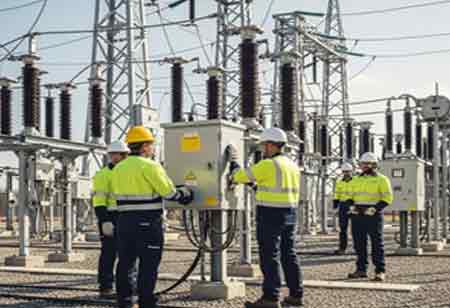Thank you for Subscribing to Electrical Business Review Weekly Brief
I agree We use cookies on this website to enhance your user experience. By clicking any link on this page you are giving your consent for us to set cookies. More info
Powering Progress: The Critical Role of Electrical Distribution in Economic Growth
Effective electricity distribution is vital for modern society. Reliable Electrical Distribution Services (EDS) ensure quick recovery during disasters and minimize disruptions to essential services, highlighting their value for daily life.

By
Electrical Business Review | Thursday, July 17, 2025
Stay ahead of the industry with exclusive feature stories on the top companies, expert insights and the latest news delivered straight to your inbox. Subscribe today.
Fremont, CA: In the modern world, electricity is an invisible lifeline, powering everything from homes to industrial facilities. An intricate system of electrical distribution services plays a crucial role in delivering this essential resource safely and efficiently from generation sites to end users. Regardless of technological advancements, the core value of these distribution services—reliability, safety, and economic development—remains constant.
Ensuring a Steady Supply of Electricity
At the heart of any reliable electrical supply lies an efficient distribution network. These services act as the final link in the energy chain, transforming high-voltage electricity from transmission lines into a manageable flow for neighborhoods, commercial buildings, and factories. Advanced distribution systems are designed to handle system loads effectively, monitor consumption, and manage peak demands, preventing outages that could disrupt daily life or business operations. In essence, even the most sophisticated electricity generation would be rendered ineffective without a robust distribution framework to deliver power where it is needed most.
Supporting Economic Growth and Infrastructure Development
Electrical distribution is foundational to both urban and rural development. Every new construction project, whether a residential building, factory, or transportation hub, requires a connection to the power grid. Distribution services provide the means to extend energy access to underserved areas, paving the way for economic opportunities and higher living standards. Stable electricity is vital for industrial zones, technology parks, and commercial districts. As cities expand with smart infrastructures, the demand for skilled management of electrical distribution systems continues to grow. Ensuring these services are in place creates a ripple effect, boosting local economies and improving the overall quality of life.
Ensuring Safety and Adaptability in Changing Times
With safety being paramount, electrical distribution services must adhere to stringent standards and regulations. A well-designed and maintained distribution network helps mitigate risks of electrical fires, faults, and equipment failures, thereby protecting personnel and property. Regular inspections, timely system upgrades, and the implementation of protective devices are critical measures to safeguard infrastructure and sensitive equipment from voltage fluctuations, surges, and external threats like lightning.
As the global landscape shifts toward renewable energy sources and smarter grids, the role of electrical distribution services becomes increasingly vital. Consumers are more frequently adopting solar panels, wind generators, and energy storage solutions, necessitating a distribution grid capable of handling bi-directional power flow and distributed generation. By integrating these innovative energy sources, distribution services can create a more flexible and decentralized grid. Additionally, these services help maximize investments in technology, utilizing advanced metering, demand response systems, and automation to improve efficiency while empowering consumers to manage their energy use better.








